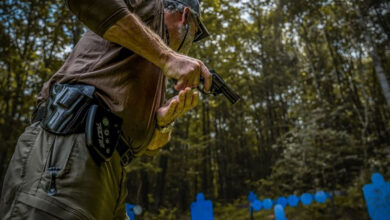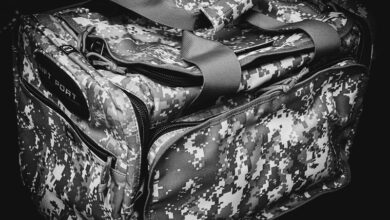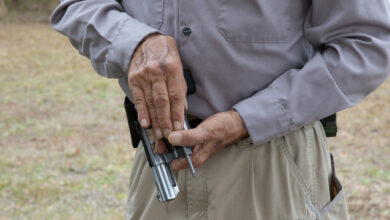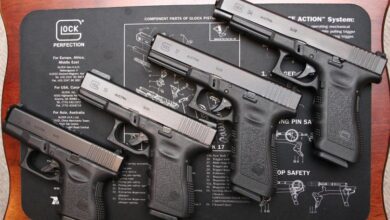Revolver Speedloading Part 2: The FLETC Technique
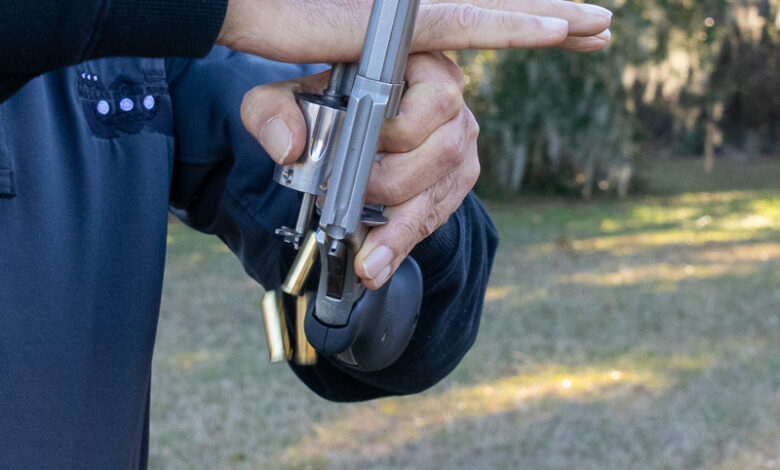
In Part 1 of the revolver speedloading series posted earlier, we took a deep dive into the FBI method. The next big advance came from FLETC, the Federal Law Enforcement Training Center, which opened in 1970 when the revolver was still the primary weapon in Federal as well as local, state, and county law enforcement. The protocol of practicing with light .38 Special loads but carrying .357 Magnum rounds on duty had given way to more practical training: if you were going to carry Magnums, you were going to shoot Magnums in training and qualification. With spent casings now more likely to stick in chambers, the use of the thumb on the ejector rod that was a cornerstone of the FBI technique didn’t always work.
In the ‘70s, FLETC addressed that with a reloading protocol that became extremely popular. The opening of the cylinder was the same as with the FBI technique, right down to the fact that left-handed officers were taught to shift the gun to their right hand to begin the operation. The big difference was in ejection.
The left hand would still hold the open-cylindered revolver, its muzzle pointed skyward. But now, with the FLETC technique, the right hand would deliver a single powerful slap to the ejector rod. This was much more likely to dislodge the spent casings from high-pressure loads that had fire-formed into the chambers.
Forward-thinking law enforcement agencies outside the Federal sector were quick to adopt it. NYPD veterans of the time recall it being taught by their Firearms and Tactics Unit on City Island. The late, great Chicago Police Department firearms instructor Jack Manfre made the FLETC reload a part of his agency’s program. Across the country, it was recognized as a potentially life-saving improvement in service revolver manipulation.
Since the right hand had to smack the ejector rod before reaching for fresh ammo, instead of being able to do that while the left hand was managing ejection, it was very slightly slower than the FBI method but more reliable…and when we’re talking life-or-death safety equipment and techniques, reliability always has to come before speed.
Good News
The FLETC method is a simple gross motor skill. It did indeed give more positive ejection. It also largely eliminated the habit of rapidly and repeatedly pumping the ejector rod, which rangemasters had learned to associate with the dreaded stoppage of spent casings getting caught under the ejector star.
Except for the right-hand palm, instead of the left thumb hitting the ejector rod, the rest of the reloading cycle was exactly the same, so it was easy to teach to officers who had already become familiar with the FBI technique.
Bad News
Though generally recognized as an improvement, the FLETC method was not without its own flaws. The hand coming up and over to whack the ejector rod could come in at an angle, and when done hard enough and often enough, it could bend the ejector rod. This condition impairs clean ejection and, taken to extremes, can even impair cylinder rotation.
The palm and heel of the hand come close to the always sharp edge of the crane (yoke) upon which the cylinder is swung out. Rangemasters learned to keep Band-Aids handy for cut hands. While such an injury would probably go unnoticed in the heat of a high-volume gunfight that required reloading, when it happened on the range, it could cause the shooter to reload hesitantly after it had occurred a couple of times.
If done sloppily – for example, if trying to reload while running for cover – it was possible for that sharply-swinging ejection hand to miss the gun entirely and cause the shooter to hit their own left wrist on the radial nerve. That is exactly the spot where one would strike an opponent’s forearm to make him drop his gun.
Moreover, the grasp of the open revolver was such that the knuckle of the index finger often got in the way of a full depression of the ejector rod. In a large hand, the stubby ejector rod of a short-barrel J-frame revolver might be level with the top of the knuckle, making effective ejection with a slap almost impossible.

Finally, because it shared every movement in the earlier technique save for the ejector rod slap, the FLETC method inherited a couple of the FBI method’s other weaknesses. There was a tendency to hold the wrist and gun at a near-45-degree angle when inserting fresh rounds, and while this was not a problem snapping individual cartridges into their chambers with the thumb, it compromised gravity’s ability to help the rounds drop into those chambers from the speedloaders that had come into popularity after the Newhall Massacre of 1970 in which four California Highway Patrolmen had been murdered, one because he could not reload his Colt Python quickly enough to stop the cop-killer who was rushing up on him.
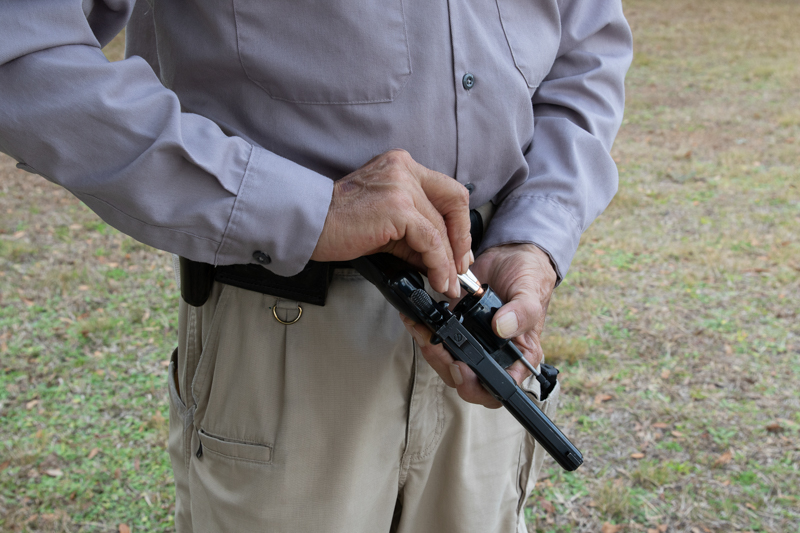
Also, given the conventional reloading grasp with the fingers through the open cylinder window of the frame, a finger in contact with the forcing cone of a heated-up barrel could be burned, on rare occasions, even to the point of causing the startled user to drop the revolver.
Evolution continued, and the next technique to emerge in the 1970s was the StressFire revolver reload. We’ll go into detail on that in Part 3 of this series.
The post Revolver Speedloading Part 2: The FLETC Technique appeared first on The Mag Life.
Read the full article here

